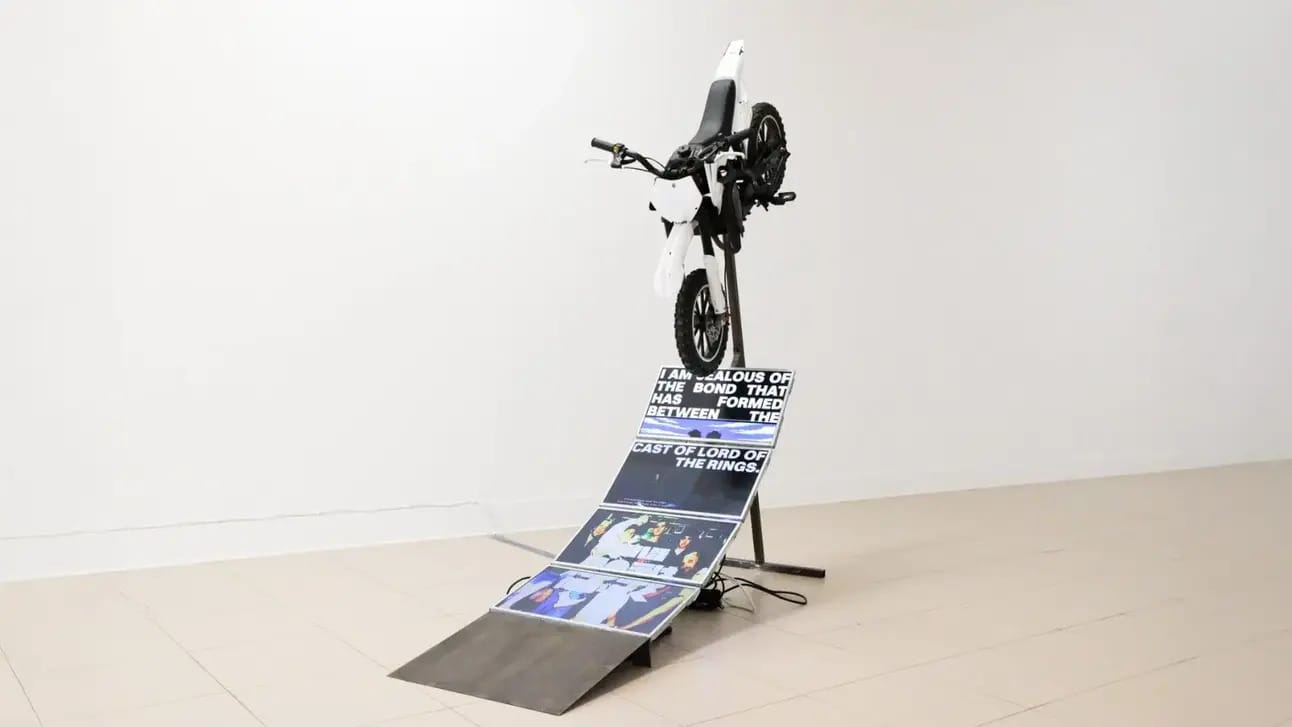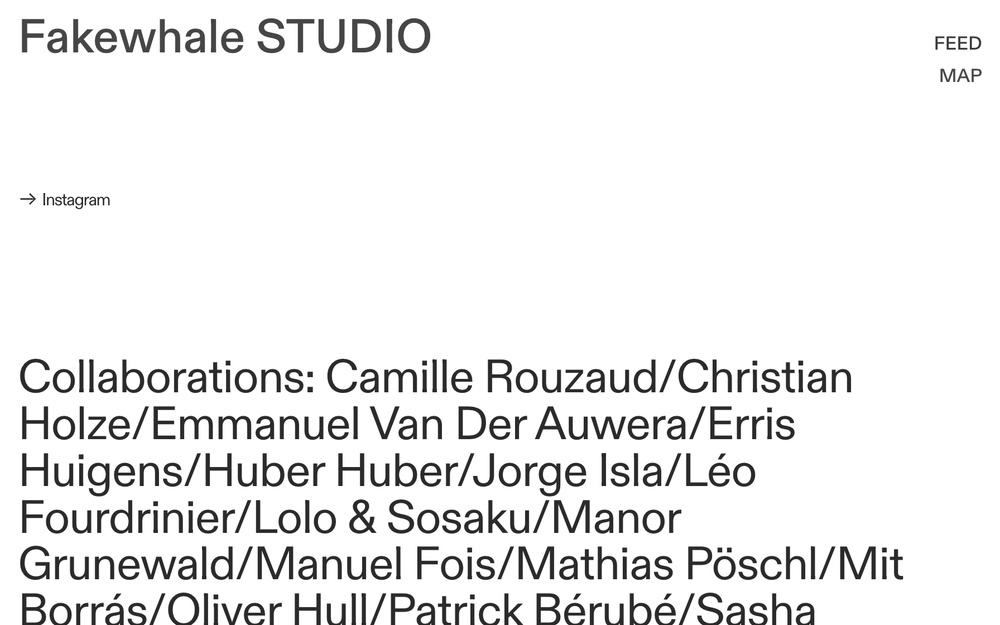
Robert Smithson
Nonsite (Essen Soil and Mirrors), 1969
We find ourselves in a suspended time, where objects bear the traces of an interrupted history, spaces empty out to become mirrors of absence, and the act of caring dissolves into an echo without an owner. This month’s exhibitions have guided us through a reflection with neither beginning nor end, a play of metamorphoses and subtractions in which the visible and the invisible chase each other. There was a moment, standing before Michael E. Smith’s works at Crèvecœur Gallery, when we felt the weight of things: objects trapped in a spectral stasis, stripped of function but not of memory.
We moved through Linus Rauch’s illusory architectures at Galerie im Körnerpark, where blue became the color of waiting, a window onto an elsewhere that remains unreachable.And then, in a curatorial landscape that is becoming increasingly elusive, we asked ourselves what it means today to exhibit, to select, to attribute meaning.
If the curator has become a “zombie” entity, as some reflections on the current state of art suggest, then the path we traced through these exhibitions seems to respond with a silence dense with meaning.
INSIGHTS/ WHAT IS LOWTECH?
Fakewhale emerges as a critical response to this transitional moment, where technology not only takes on an increasingly central role but asserts itself with a pervasive, almost intrusive presence, particularly within the realm of art. This technological infiltration is riddled with ambiguities: on the one hand, it embodies progress and innovation; on the other, it carries an aura of self-referential decadence, paradoxically becoming fascinating in its latent obsolescence. Through our curatorial journey, a clear direction has gradually taken shape: an interest in a specific category of works. This reflection led us to define the concept of LOWTECH.
If you want to submit the full documentation for an exhibition or event, use the dedicated form HERE. Every week, our editorial team reviews and selects the best applications.
Jean-Baptiste Durand in conversation with Fakewhale
Jean-Baptiste Durand moves fluidly between design, ceramics, and scenography, merging industrial and artisanal techniques with conceptual freedom. His work resists categorization, drawing from diverse influences, from motorsports aesthetics to wabi-sabi philosophy. As he prepares for upcoming exhibitions and collaborations, Fakewhale explores his creative process, his vision beyond functionality, and the narratives shaping his work. […]
Fakewhale: Your background includes working alongside Mathieu Lehanneur for five years before establishing your independent practice. How did that experience shape your approach to design, and what prompted your decision to shift towards a more experimental and interdisciplinary direction?
Jean-Baptiste Durand: At Lehanneur’s studio, I felt like I was learning a ton of things, really fast. After just six months, I was modeling 6‑meter‑high trees and overseeing the construction of a 1,000 m² cultural space. I still wonder how I managed to keep up because I wasn’t the most rigorous haha!
It was great because he was working on super diverse projects, ranging from industrial objects to interior architecture, as well as installations and collectible design… and that was exactly what I wanted to do: a bit of everything. My plan from the start was to learn the job in a studio, then leave to go solo… but the road turned out to be a bit more contorted than expected! What led me toward more experimental pieces? Well, it’s simply because I don’t even realize they’re experimental! I just feel like I’m making things, that’s all! But I guess this is the whole point: creating things that you hope will bring something new! That makes me wonder: does creating mean experimenting? Feels like a philosophy exam question! But to be honest, I often feel that I’m not creating but only copying works I love, so I don’t really feel I’m creating either! […]

Authors' Insights explores experimental practices spanning sculpture, installation, video art, and transdisciplinary research. As part of the Fakewhale LOG, it provides writers, curators, and art professionals a platform to exchange perspectives, driving deeper engagement with contemporary critical discourse.
Are you a writer, curator, or art professional? Do you have a unique perspective to share or a critical reflection that could enrich the contemporary debate? Fakewhale invites you to contribute to the new “Authors Insights” section. Reach out at [email protected]
In this new chapter of the “Curator Spotlight” series curated by Giuseppe Moscatello and Linda Shen, the exploration into the intersection of digital artistic experimentation and the cultural dynamics of the contemporary Chinese art scene continues. The transformative capabilities of generative AI have significantly reshaped the artistic landscape, providing new possibilities for creation and interpretation.
FAKEWHALE GALLERY
Last week, Fakewhale presented The Mousetrap collection by Iñigo Bilbao, a Fakewhale Gallery release on Verse. The format featured four 1/1 auctions and an open edition. All works are sold out.
FAKEWHALE STUDIO
Fakewhale STUDIO is a research project focused on the use of artificial intelligence and other technological media to explore the relationship and potential between image and artistic representation.
Since the latest update, Fakewhale STUDIO continues its research into the vast potential of generative images and their profound impact on artistic production. […]
That wraps this week’s issue of the Fakewhale Newsletter, be sure to check in for the next one for more insights into the Fakewhale ecosystem!

















